The Greenland Shark, Somniosus Microcephalus, Is A Member Of The “sleeper Shark” Family. It Moves


The Greenland shark, Somniosus microcephalus, is a member of the “sleeper shark” family. It moves very slowly around the deep ocean.
They grow to enormous sizes – in some cases more than 5 metres (16 feet) long – and live in very cold waters in the far north Atlantic, sometimes at the surface but often as deep as 1,800 metres (1.1 miles). They cruise along at 0.74 metres per second, or about three-quarters of a mile an hour.
It was already known that they can live for more than 200 years, but new research has shown that is literally only half the story.
When the oldest shark researchers studied was born (the Greenland shark gives birth to live young, not eggs), the Pilgrims had only recently settled in Massachusetts. Europe’s Thirty-Year War was in its infancy. James I sat on the throne of England. It lived through the English Civil War, the Great Plague and Fire of London, the American Revolution, the Napoleonic Wars, both world wars, and the entire nine-season run of Seinfeld.
Continue reading.
More Posts from Llamaslikesciencetoo and Others
Customer: So seeing a whale is guaranteed, right?
Me: Well, it is the open ocean and they are wild animals so we cannot control when and where they are-
Customer: Yeah, but I’m paying to see a whale. How long until we see one?
Me:

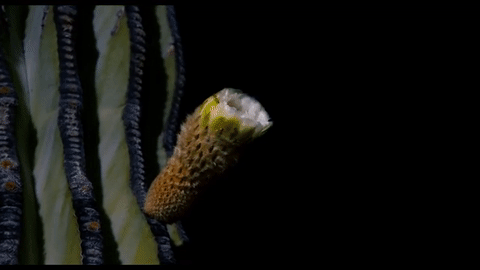


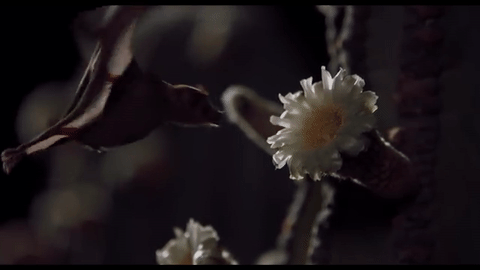



while people think of the birds and the bees pollinating the flowers and the trees, there are also hundreds of species of nectar feeding bats which pollinate thousands of species of plants. known as chiropterophilous plants, many grow flowers that open at night so that the bats, attracted to the sugary nectar, get a dusting of pollen that is carried along with them to the next flower.
these plants and nectivorous bats have shaped each other through coevolution, with the flowers, usually white in colour and pungent in scent so as to be conspicuous at night, often taking a vase like shape to accommodate the face of the bat. the bats, for their part, have particularly good eyesight and a fine sense of smell, but their sonar is often reduced.
chiropterophilous plants even manufacture substances that are useless to themselves but helpful to the bat; because bats often eat the pollen in addition to the nectar, the pollen of these plants contain an amino acid, proline, which is needed to build strong wing and tail membranes.
also worth noting: compared to say birds and bees, bats have heavy wings for their body size. consider that bats beat their wings up to 17 times per second while the bumblebee can approach 200 wing beats per second. and while those comparatively cumbersome bat wings seem like a detriment to maneuverability, new research shows this extra wing mass makes possible their ability to land upside down, like when roosting. (videography)




Women in Science: 50 Fearless Pioneers Who Changed the World by Rachel Ignotofsky
I have been following @rachelignotofsky on Tumblr for several years, and I’m truly happy to see her creative art of brilliant scientists now being in a book. These amusing illustrations together with educational information make a fantastic combination. I’m getting the book for my little sister but it’s definitely a great read for everyone. You can order the book HERE.
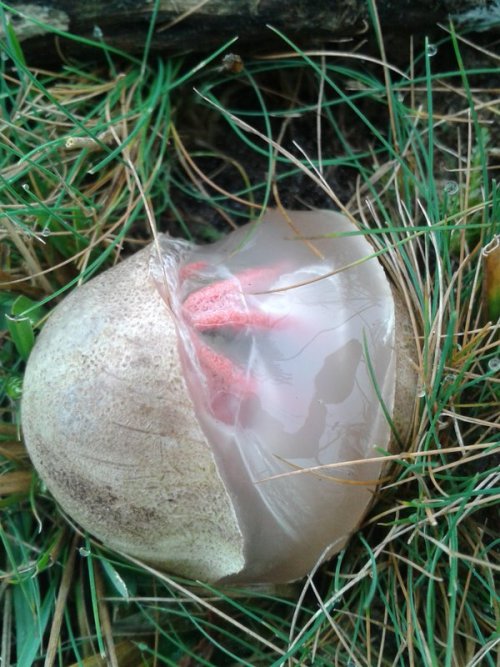
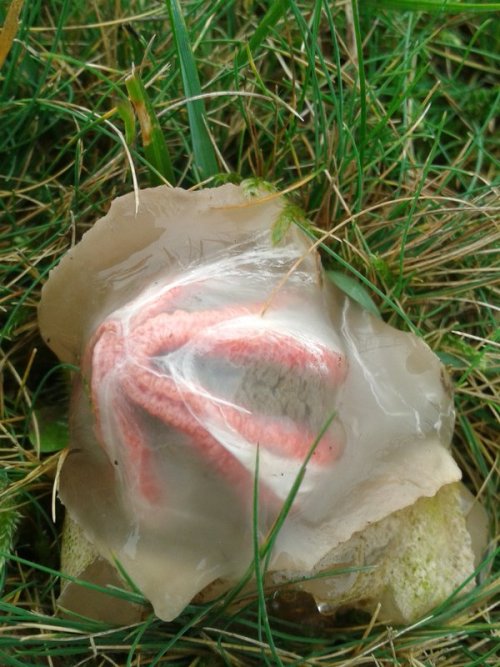
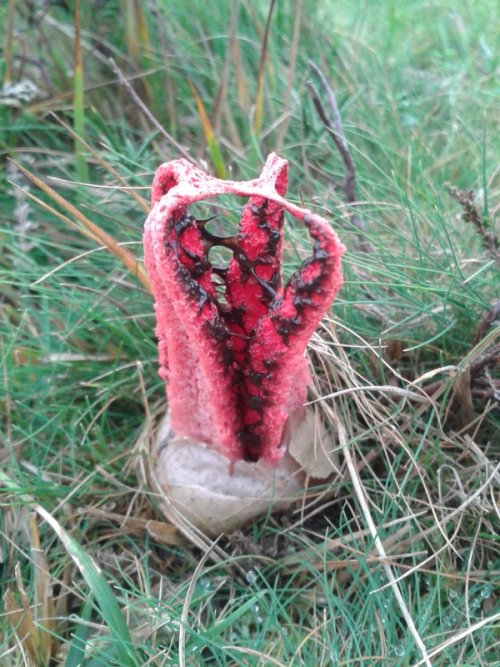
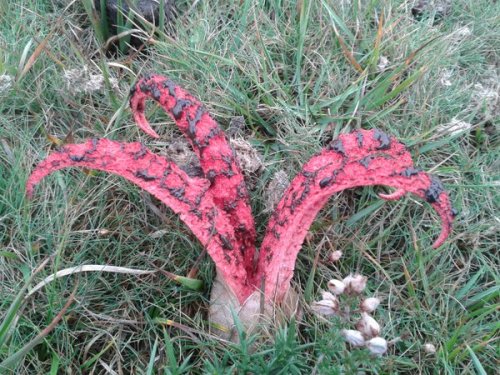
(image credit to Dan Hoare on twitter)
I ONLY JUST LEARNED ABOUT THE EXISTENCE OF THIS MUSHROOM????? WHICH ERUPTS FROM AN EGG BEFORE UNCURLING HELLISH ARMS, EXPOSING ITS STICKY MASS OF SPORES TO BE SPREAD BY FLIES ATTRACTED BY THE SCENT OF ROTTING FLESH???
Admittedly, I am easily won over by all organisms that attract flies with the scent of rotting flesh. But the octopus stinkhorn (Clathrus archeri) also has tentacles, a freaky egg stage, and blackish goop, so it’s my favorite now.

Just some lesser known facts about octopuses you guys might like.
How do you feel about Velvet Worms?
i LOVE velvet worms alright they look like someone had a bunch of caterpillars and snakes lying around, just overflowing all over the place and thought HOW am i gonna make these take up less space wait lets just Smash Em Together

so velvet worms ! not actually worms at all, but their own separate phylum related to tardigrades, and they tend to stay pretty small, with the longest ones getting maybe 8 inches or so
the Official name for em is onychophora, which means “claw bearer” and makes a lot more sense when you find out that at the end of all those little stubs ( called lobopods ! ) is a pair of tiny retractable claws

theyre ALSO notable for birthing live young, breathing through their skin, AND for spraying long thin streams of mucus from almost a foot away at anything that bothers them through slime glands located under their skin

the mucus isnt just for defense though ! velvet worms are actually predatory animals, and the the slime is used a lot in hunting - when sprayed, it crosses over the unfortunate bug like a sticky net, quickly hardening into tiny death traps that the velvet worm can then consume at its own leisure

while generally solitary, they also sometimes form little social communities with other velvet worms, with groups inhabiting rotting logs, doing things like hunting together and defending their nest from outsider worms
they dont seem super intimidating mainly because we’re not a half an inch tall

but to a cricket, this is the face of Terror
x x x x x
SeaWorld Can Extend Tilikum's Legacy Beyond the Show Pool
Monday, March 14, 2016
http://voiceoftheorcas.blogspot.com/2016/03/seaworld-can-extend-tilikums-legacy.html
To Whom It May Concern:
Myself, and the other members of VOTO, Samantha Berg, John Jett, and Carol Ray, have been informed that Tilikum, a SeaWorld killer whale in Orlando, is near death. We are saddened by this announcement, although it is not unexpected.
Tilikum has developed an antibiotic resistant bacterial infection of the lungs, with pneumonia being the leading reported cause of captive killer whale mortality. Efforts to treat Tilikum have failed due to decades of antibiotic and antifungal therapy, medications that three-of-us at VOTO have fed him, and medications he was on in 2010 when he killed Dawn Brancheau, as reported by
APHIS, here
Tilikum has been getting fed antibiotics consistently for at least two decades, primarily because of his badly damaged teeth, including open bore holes that must be flushed with antiseptic solution 2-3 times daily. These bore holes can lead to fish particles, roe, and other debris getting into the jaw and eventually into his blood stream, causing chronic low grade infection(s), and able to seed various organs, including the lungs. The end result is that, now, Tilikum is filled with bacteria that are resistant to powerful and broad spectrum medications that SeaWorld is dosing him with.
Tilikum is, at this time, likely suffering from pulmonary edema, or excess fluid in his lungs. When the surface area of his alveoli diminishes sufficiently, he will suffocate in a stretcher, at SeaWorld. In a last ditch effort to obtain air to oxygenate his tissues, he will likely thrash in the stretcher, and go through a period of “death throes,” prior to finally passing. This is a particularly dangerous time for the animal care and training staff on hand.
A crane is reportedly standing by, possibly to recover his body if he should pass. This information is unconfirmed, but it does correspond with SeaWorld’s recent announcements seen in this video:
Many citizens, including some in the scientific community, are hopeful that SeaWorld will dedicate Tilikum’s cadaver to science. This gesture would advance our understanding of the impact of captivity on marine mammals such as Tilikum.
Histological samples of dorsal fin collagen would help us understand collagen fibrillogenesis in killer whales, and why dorsal fins collapse in captivity. Kidney tissue samples could help us understand the effects of chronic dehydration on orcas, like Tilikum, who require gelatin as a dietary supplement. Cardiac tissue could be examined for evidence of physical deconditioning. Eye tissue could be used to understand the effects of looking upward toward trainers, a behavior that is probably contributory to early cataract formation in show animals that must look for hand signals from trainers, on stage. Blood tissue can be used to test for elevated titers of viruses such as West Nile, St Louis encephalitis, and other mosquito transmitted “bugs” associated with zoos, but not seen in wild animals. Immunoglobulin levels could provide information on captive orca immunity. Detailed bone and joint examinations could be examined for evidence of various arthritides. DNA testing could help identify Tilikum’s natal pod, and so on.
Take the NFL as an example
Samples of brain tissue were critical in understanding the newly described condition (seen in NFL players) known as
Chronic Traumatic Encephalopaty (CTE)
and as depicted in the feature film “Concussion,” with Will Smith. The NFL was initially resistant to outside scientists performing these studies, but is now helping to fund them. SeaWorld can mimic the NFL, and CEO Joel Manby can get credit for the change, something that might give him some job security.
Killer whales in captivity are also known to slam their heads on solid objects such as gates and concrete walls, especially adult male killer whales, with Kanduke being a famous example. Tilikum’s brain tissue, or perhaps a new MRI, as depicted in Blackfish, could push our understanding of the orca brain forward, a brain four times larger than our own.
SeaWorld has an opportunity to extend Tilikum’s legacy beyond the performance pool and to substantiate it’s claims of performing relevant science. We are hopeful they will take up this idea for the benefit of science, the public, policy makers, whale lovers, and for future killer whales.
Thank you, Tilikum, for your sacrifices. Your legacy will live on through us and the millions of people your story has touched.
Jeffrey Ventre MD
Blackfish cast member








Uncovering the Willow Ptarmigan Diorama
OKAY SO THIS IS COOL. The Reptile Hall is getting ready to undergo some renovations, and the first step in the process was to dismantle the square diorama case which previously housed Carl Akeley’s striped hyenas in the corner of the hall. But what NOBODY EXPECTED was to find a hidden diorama that had been blocked from view for ??? years.
Not only that, this is a really, really cool diorama because it’s actually two dioramas in one. The lighting mechanism isn’t functional right now, but when you approach you notice that it’s dark. The idea is that there’d be two lighting sources, two scenes (with two animals) that mirror one another, and a two way mirror.
The photos I snapped depict a willow ptarmigan (Lagopus lagopus) in a summer scene, sporting its summer plumage. In the winter, the bird’s plumage turns white. Here, the summer diorama is actually mounted to the ceiling of the diorama case, so when you shine a light through the front of the glass, that’s what is reflected back from the two way mirror. That means, behind the mirror is the second diorama: the winter scene, with a reversed taxidermied ptarmigan in a mirrored, winter landscape. Visitors could then approach the diorama and experience two different camouflage phases of the same animal, seamlessly fading from one to the other.
I hope we can fix up the lights again soon because this is AWESOME
Ptarmigan Bird Exhibit, Seasonal Plumage, Hall 20 diorama © The Field Museum, Z86694 and © The Field Museum, Z86693.
How do you disentangle a humpback whale?
Very, very carefully – and without getting in the water. The Hawaiian Islands Large Whale Entanglement Response Network has it down to a science.

Photo: J. Moore/NOAA Permit #15240
Each year, numerous whales and other marine animals become entangled in a variety of materials, such as fishing gear, rope and plastic bags. Entanglement can physically harm animals while also impairing their movement. An entangled animal can find it difficult or impossible to feed, and at times the entanglement can drown them.
That’s where the Hawaiian Islands Large Whale Entanglement Response Network comes in. These highly-trained professionals from Hawaiian Islands Humpback Whale National Marine Sanctuary, working closely with and under authority of NOAA Fisheries’ Marine Mammal Health and Stranding Response Program, know how to safely rescue creatures like humpback whales from entanglement.

Humpback whales can hold their breath for much longer and swim faster than a human can, and an entangled whale is often stressed or panicked. Trying to free a 40-ton whale that likely doesn’t realize rescuers are there to help can be dangerous for the animal and for humans. Rescuers never enter the water to free an entangled whale.
Instead, rescuers grab hold of the entangled lines using a grappling hook, then attach a series of buoys to the lines. This keeps the whale at the surface and slows it down enough for the disentanglement team, following the whale in a small inflatable boat, to gain access to the animal and the lines it’s tangled in. However, even with the buoys attached, the inflatable boat may still get towed behind the animal. Humpback whales are strong animals that can move rapidly through the water, so this can be quite dangerous. It is important that the disentanglement team be trained and prepared to respond to the whale’s movements.

As the whale grows tired, the rescuers work their way closer. Once they’re close enough, they use a custom-designed knife attached to a long pole to cut away the gear entangling the whale. These knives are specially designed to cut the rope but not the whale. Typically, after several passes, the whale is free!
Once the whale is untangled, the team uses the grappling hook once again to collect and remove the debris from the water so that other animals don’t become trapped in the future.

Photo: Ed Lyman/NOAA, under NOAA permit #15240
Entanglement is a problem around the globe, and sanctuary staff can only help a small percentage of entangled whales. Since 2002, Hawaiian Islands Humpback Whale National Marine Sanctuary has received more than 100 confirmed reports of entangled humpbacks, representing at least 70 different animals — and more entanglements go unseen and unreported.
With that in mind, prevention is the ultimate objective: by reducing the amount of derelict fishing gear and other debris in the ocean and making actively fished gear more “whale safe,” we can reduce the number of whales and other animals that get entangled and hurt or killed.
Watch the Disentanglement Response Network in action:
GIFs via NOAA’s Marine Mammal Health and Stranding Response Program, under NOAA permits 932-1905, 15240 932-1489, and 932-1905-01/MA-009526-1, and Hawaii State Permit PMAL-2015-206.


KELP FOREST REPLACE CORALS IN THE MEDITERRANEAN
A decrease from pH 8.1 to 7.9 observed in a CO2 vent system at 40 m depth leads to a dramatic shift in highly diverse and structurally complex habitats.
Rising levels of CO2 released by anthropogenic activities are driving unprecedented changes in the chemistry of the oceans. The mean ocean surface acidity has increased by 25–30% (equivalent to a drop of 0.1 pH units) since as the advent of the Industrial Revolution in the 1780s and is predicted to decline by a further 150–200% by the end of the century.
Ocean acidification is one of the greatest long-term challenges facing the survival of reefs and coral. Habitats widely distributed in the Mediterranean, such as coral colonies and maerl environments, characterized by the predominance of calcareous organisms, are relegated by Laminaria rodriguezii forests.
Dominant habitats at mesophotic depths (the deepest part of the photic zone where light penetration is low, typically from 30–40 m to over 150 m) are usually characterized by a large dominance of calcifying organisms, such as endangered coralligenous outcrops and rhodolith beds in the Mediterranean Sea, which display a notable carbonate production. Calcareous red algae are the main framework builders in those two habitats, providing structural complexity and favouring biodiversity
Reference: Linares et al. 2015. Persistent natural acidification drives major distribution shifts in marine benthic ecosystems. Proc. R. Soc. B
-
 testosterone-dyke liked this · 6 years ago
testosterone-dyke liked this · 6 years ago -
 jurrasicpork liked this · 6 years ago
jurrasicpork liked this · 6 years ago -
 exploraexplora reblogged this · 6 years ago
exploraexplora reblogged this · 6 years ago -
 usernamestrugglesaretooreal reblogged this · 7 years ago
usernamestrugglesaretooreal reblogged this · 7 years ago -
 hippiecub-blog liked this · 7 years ago
hippiecub-blog liked this · 7 years ago -
 skillypot reblogged this · 7 years ago
skillypot reblogged this · 7 years ago -
 uhoojjjjjjjj reblogged this · 8 years ago
uhoojjjjjjjj reblogged this · 8 years ago -
 blvvdibird reblogged this · 8 years ago
blvvdibird reblogged this · 8 years ago -
 supremequeenofthejellyfish reblogged this · 8 years ago
supremequeenofthejellyfish reblogged this · 8 years ago -
 aliens-ghosts-and-some-pizza reblogged this · 8 years ago
aliens-ghosts-and-some-pizza reblogged this · 8 years ago -
 aliens-ghosts-and-some-pizza liked this · 8 years ago
aliens-ghosts-and-some-pizza liked this · 8 years ago -
 cephalopodgal liked this · 8 years ago
cephalopodgal liked this · 8 years ago -
 emptyacre reblogged this · 8 years ago
emptyacre reblogged this · 8 years ago -
 fiore-della-valle liked this · 8 years ago
fiore-della-valle liked this · 8 years ago -
 whatsthatsuppostamean liked this · 8 years ago
whatsthatsuppostamean liked this · 8 years ago -
 lestenna reblogged this · 8 years ago
lestenna reblogged this · 8 years ago -
 leahlozers-blog1 liked this · 8 years ago
leahlozers-blog1 liked this · 8 years ago -
 melissa-raptor reblogged this · 8 years ago
melissa-raptor reblogged this · 8 years ago -
 melissa-raptor liked this · 8 years ago
melissa-raptor liked this · 8 years ago -
 atlspnpoefinnlover liked this · 8 years ago
atlspnpoefinnlover liked this · 8 years ago -
 texasdreamer01 reblogged this · 8 years ago
texasdreamer01 reblogged this · 8 years ago -
 grimapparitions reblogged this · 8 years ago
grimapparitions reblogged this · 8 years ago -
 calminggel reblogged this · 8 years ago
calminggel reblogged this · 8 years ago -
 fernweh-faraway reblogged this · 8 years ago
fernweh-faraway reblogged this · 8 years ago -
 lilyfromfrogzcountry reblogged this · 8 years ago
lilyfromfrogzcountry reblogged this · 8 years ago -
 mychemicalromancehater reblogged this · 8 years ago
mychemicalromancehater reblogged this · 8 years ago -
 sweetlyminiaturesublime liked this · 8 years ago
sweetlyminiaturesublime liked this · 8 years ago -
 woo-party-hardy reblogged this · 8 years ago
woo-party-hardy reblogged this · 8 years ago -
 calvinandhobbit reblogged this · 8 years ago
calvinandhobbit reblogged this · 8 years ago -
 askrebel liked this · 8 years ago
askrebel liked this · 8 years ago -
 pom-mun reblogged this · 8 years ago
pom-mun reblogged this · 8 years ago
Mainly interested in ecology, but also the entirety of science.
179 posts